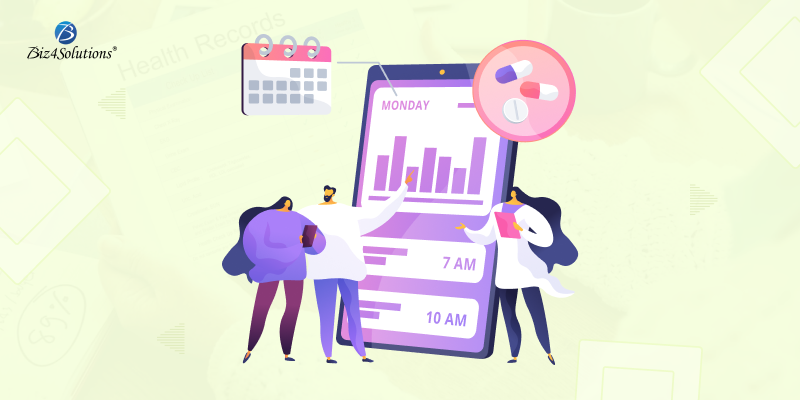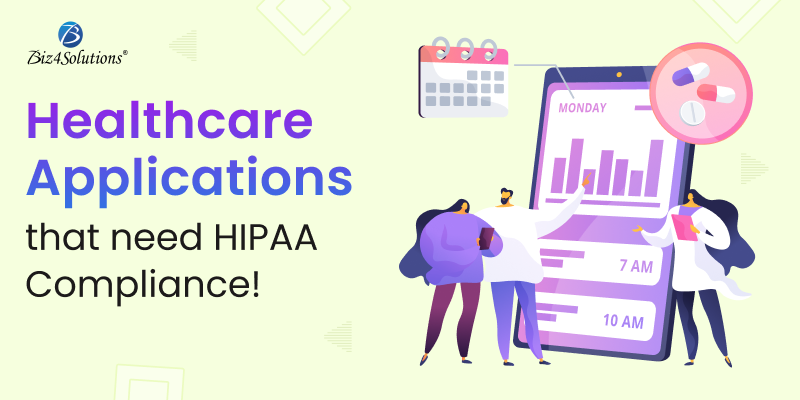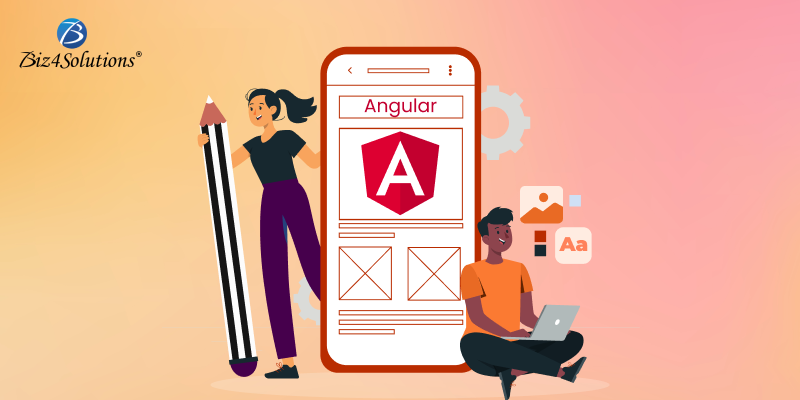Does your Healthcare App need to be HIPAA Compliant


In recent years, mobile applications have had a transformative impact on our society. This is particularly evident in the healthcare industry, where a mobile app has become an essential tool for both medical professionals and patients. Major app stores offer a vast selection of mHealth apps, totaling more than 350,000. These apps encompass a wide range of categories, including medical applications as well as those focused on health and fitness. So, it is safe to say that mobile app development is shaping the future of the healthcare industry.
If you are developing a mHealth app, you may have encountered the term “HIPAA compliance” in the context of HIPAA-compliant app development. However, it is important to understand whether it applies to your specific app. That’s because not all health apps are required to be HIPAA-compliant. Certain factors determine whether an app needs to adhere to HIPAA standards. While HIPAA governs the use of data collected by healthcare institutions, facilities, and professionals (known as covered entities), data collected through non-medical health apps or devices fall under different regulations.
In this post, we will provide you with all the necessary information to definitively determine whether your app needs to be a HIPAA-compliant healthcare mobile app. So, we will start off with what is HIPAA compliance and why is it required.
What is HIPAA Compliance?
HIPAA, the Health Insurance Portability and Accountability Act of 1996, establishes a set of regulatory guidelines that define the legal usage and sharing of protected health information (PHI). The Department of Health and Human Services (HHS) oversees the enforcement of HIPAA regulations through its Office for Civil Rights (OCR).
Take a look at the HIPAA guidelines:
Privacy Rule: The HIPAA Privacy Rule defines standards to safeguard an individual’s PHI. This includes individually identifiable health information kike medical records, billing information, etc. As per this rule, individuals hold certain rights with regards to their health information and that all covered entities must take authorization or consent from them before disclosing their PHI.
Security Rule: The HIPAA Security Rule sets standards for the implementation of administrative, physical, and technical safeguards to protect electronic PHI (ePHI) held or transmitted by covered entities. It requires covered entities to assess risks, implement security measures, and maintain ongoing compliance to protect ePHI from unauthorized access, use, or disclosure.
Breach Notification Rule: The HIPAA Breach Notification Rule requires covered entities to notify affected individuals, the OCR, and, in some cases, the media, following the discovery of a breach of unsecured PHI. The rule defines what constitutes a breach and outlines the necessary steps for reporting and mitigating such incidents.
Enforcement Rule: The HIPAA Enforcement Rule establishes the procedures, penalties, and requirements for investigations, audits, and enforcement actions carried out by the OCR. It empowers the OCR to impose civil monetary penalties for non-compliance with HIPAA regulations, and in some cases, criminal penalties for willful violations.
What is the need for HIPAA compliance?
Data is one of the most valuable assets in the world today and data security is of utmost importance. Every industry that collects and processes sensitive data, must follow specific regulations to ensure the security and protection of that data. One of those industries is healthcare. As reported by hipaajournal.com, in between 2009 and 2021, the medical records of more than 1.2X of the US population were exposed.
HIPAA laws were enacted to streamline the exchange of healthcare information through modern methods and establish guidelines for protecting personally identifiable information (PII) in the healthcare and health insurance sectors to prevent unauthorized access and data theft.
Breaking it down, HIPAA’s overarching goal is to safeguard confidential and sensitive patient information handled by healthcare providers, hospitals, and insurance companies. It also includes guidelines for people’s rights to know how their health information is utilized and to exercise that control.
As the market for healthcare app development continues to expand, medical service providers are increasingly considering how to safeguard the data transmitted through their software. These compliance measures are implemented to safeguard the industry and its users.
What is Protected Health Information?
Protected health information (PHI) refers to demographic data that can be utilized to identify patients or clients of entities subject to HIPAA regulations.
When PHI is transmitted, stored, or accessed electronically, it is categorized as electronic protected health information (ePHI) and falls under the supervision of HIPAA regulatory standards. The HIPAA Security Rule, introduced as an amendment to account for advancements in medical technology, governs the security of ePHI.
HIPAA regulations provide a list of 18 identifiers that must be eliminated from health information to ensure its de-identification. Here are some common examples:
- Name and address
- Social Security Number (SSN)
- Date of birth
- Email addresses, phone numbers, and fax numbers
- Medical record numbers and Social Security numbers
- Biometric Identifiers (Fingerprints, Voiceprints)
- Facial images
- Certificates and IP Addresses
- Health plan beneficiary numbers
- Vehicles Identifiers including license plate numbers
Which Individuals or Entities are required to adhere to HIPAA Compliance Regulations?
It is crucial to have a clear understanding of which entities are required to adhere to these regulations in order to protect data privacy and avoid potential penalties. Broadly speaking, there are two primary categories of organizations that need to comply with HIPAA regulations:
1. Covered Entities:
A covered entity refers to any company operating in the healthcare industry that offers treatment, operations, and payment services and, as a result, handles the tasks of electronic creation, collection, or transmission of Protected Health Information (PHI). The covered entities are listed below:
Medical Practitioners: Healthcare professionals including physicians, dentists, pharmacists, and nurses, as well as healthcare facilities like hospitals, clinics, and nursing homes, are among the entities involved in delivering or administering medical care.
Health Plans: Health plans encompass organizations that provide various forms of health insurance coverage, including HMOs (health maintenance organizations), PPOs (preferred provider organizations), Medicare/Medicaid programs, employer-sponsored health plans, and similar offerings.
Healthcare Clearinghouses: Healthcare clearinghouses are entities that undertake the task of converting nonstandard protected health information (PHI) into a standardized format to facilitate electronic transmission among covered entities.
2. Business Associates
Business associates (BAs) are third-party service providers who access protected health information (PHI) while performing services on behalf of covered entities. Business associates must have a written agreement with the covered entities they are serving, outlining their obligations to protect the PHI.
Billing Companies: Billing companies are entities that assume responsibility for handling claims processing and patient account management.
Electronic Health Record (EHR) Vendors: Companies involved in the development, hosting, or management of electronic health record (EHR) systems for healthcare providers.
IT Service Providers: Companies that provide technical assistance, data storage, or cybersecurity solutions to covered entities.
Consultants and Auditors: Individuals who assess the operations and compliance status of a covered entity, while also accessing protected health information (PHI).
Healthcare Apps and HIPAA Compliance: All You Need to Know
HIPAA compliance requirements apply to healthcare providers, health plans, and healthcare clearinghouses (known as covered entities), as well as their business associates who handle protected health information (PHI) on their behalf. So, health apps that handle or process PHI need to be HIPAA compliant. Such apps monitor patients and maintain a database of their personal information. Consequently, a logical question may arise: is it obligatory for all health apps to adhere to HIPAA regulations?
The answer to the question depends on two key factors: the source of information and the objective of data gathering. According to the HIPAA guidelines, Protected Health Information (PHI) encompasses the data that is created or collected by a covered entity.
This includes information relating to an individual’s past, present, or future mental or physical health, as well as any other data that is associated with that person. Therefore, when determining whether a health app needs to abide by HIPAA, it is crucial to consider whether it involves the collection and storage of such protected health information as defined by HIPAA.
Now, let’s explore various scenarios related to health applications and emphasize the importance of HIPAA-compliant app development.
1. Which Health Apps fall under HIPAA Compliance?
So, how are HIPAA-compliant applications different from other apps? Gaining a comprehensive understanding of your application’s use cases is of utmost importance. Even if the data you collect doesn’t fall under HIPAA and your mobile app stores or transmits protected health information (PHI); it must become HIPAA-compliant. An example of a HIPAA-compliant healthcare mobile app is HealthTrackr, which securely manages personal health information. Here are some examples included in the list of HIPAA-compliant mobile apps.
Telemedicine Apps:
Telemedicine and adherence to HIPAA compliance are closely intertwined as it involves remote doctor consultations and treatment methodologies. The focus of HIPAA-compliant software development for telemedicine is to protect patient privacy and ensure that strong security protocols are in place. Meeting compliance standards also prevents severe penalties for any potential breaches of protected health information. Key requirements for HIPAA compliance in telemedicine apps include authorized access, secure communication, and monitoring systems, as outlined in the HIPAA and Telemedicine Security Rule.
EHR Apps:
EHR (electronic health record) solutions have empowered healthcare professionals to transition from traditional paper-based methods to digital records of patient information. These apps enable healthcare service-providing entities to electronically create, store, and access medical records of patients. Such records comprise PHI, lab results, treatment plans, etc. HIPAA compliance for EHR apps guarantees privacy, integration, and authorized access to this ePHI (electronic Protected Health Information).
As per EHR HIPAA compliance, when an EHR app receives patient data from a covered entity, the concerned entities must ensure the secure handling and protection of (ePHI). This includes protecting the data during EDI transactions (data transmission to insurance agencies and other entities) as well.
Condition-Based Apps:
Medical apps that include protected health information about patients’ physical or mental conditions and medical data, as well as past, present, or future payments for care, must also adhere to HIPAA compliance requirements. These regulations apply to condition-based apps and any mobile applications that involve sensitive patient information.
1. Which Health Apps do not fall under HIPAA Compliance?
Mobile apps that are designed for personal use and do not contain identifiable patient information fall outside the scope of HIPAA compliance. These applications store information such as height, weight, age, name, and other relevant data. Additionally, the readings are obtained from medical devices used at home. If you intend to develop an app that manages this kind of data, note that HIPAA-compliant app development is not mandatory. Some examples of such apps include:
Workout Program Apps:
Apps that store data related to calorie burn, weight loss, and similar information are not required to be HIPAA compliant.
Diet Apps:
Apps that manage daily food diaries, track activities, and monitor weight loss progress are also not considered Protected Health Information (PHI) and do not need to comply with HIPAA.
Fitness Apps:
IoT-enabled fitness apps collect and provide data for personal tracking purposes, and hence, HIPAA compliance is not necessary.
Does your App need to comply with HIPAA Regulations?
So now, you must be wondering whether your app should undergo HIPAA-compliant app building or not. Here’s another perplexing question that must have arisen in your mind: “Is my existing app HIPAA -compliant? If, not, do I need to make any changes to the app? Here’s how you can find out.
App Users:
The application’s user base plays a crucial role in determining the need for HIPAA compliance. If your app is designed to serve patients, healthcare workers, or health insurance providers within the United States, it automatically falls within the purview of HIPAA regulations. This means that you must adhere to the privacy and security standards set by HIPAA to protect sensitive health information. It is important to note that even if your app doesn’t directly handle Protected Health Information (PHI), but you collaborate with brokers or partners who have access to PHI; HIPAA compliance becomes necessary for your application as well. This criterion will place your app on the list of HIPAA-compliant healthcare applications.
Stored Information:
As app-based PHI records are stored electronically, they fall within the scope of HIPAA IT compliance. This means that stringent measures must be in place to ensure the security and privacy of electronic PHI, aligning with HIPAA’s guidelines for safeguarding PHI in the digital realm. By adhering to HIPAA IT compliance standards, applications can effectively protect the confidentiality, integrity, and availability of PHI, mitigating the risks associated with unauthorized access, data breaches, and potential legal consequences.
If your application falls within the specified categories mentioned, it needs to be HIPAA-compliant.
Conclusion
Developing a HIPAA-compliant app or modifying your existing app to align with HIPAA regulations doesn’t have to be an overwhelming process. There are straightforward approaches that involve storing Protected Health Information (PHI) in a separate, HIPAA-compliant location, ensuring that your app’s primary database does not store any data that would trigger HIPAA requirements.
However, before embarking on this path, it is advisable to engage in discussions with an experienced software development team that possesses the expertise to build HIPAA-compliant healthcare mobile apps. By collaborating with knowledgeable professionals at healthcare mobile app development companies, who understand the intricacies of HIPAA compliance, you can navigate the process with ease. They can provide valuable guidance and assist you in strategically planning the necessary steps to ensure that your health app meets all HIPAA regulations. With the right support and careful attention to compliance, your health app has the potential to become a tremendous success.
By incorporating the appropriate measures and safeguards into the app’s design and functionality, you can not only meet HIPAA requirements but also inspire trust and confidence among users. This can result in increased user adoption, positive feedback, and overall satisfaction with your app’s ability to protect sensitive health information. This will position your app for long-term success in the healthcare industry.



